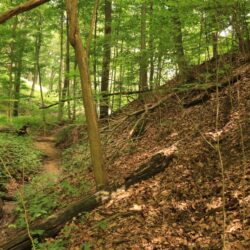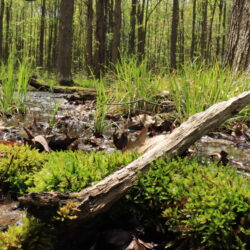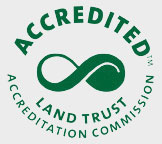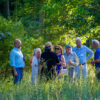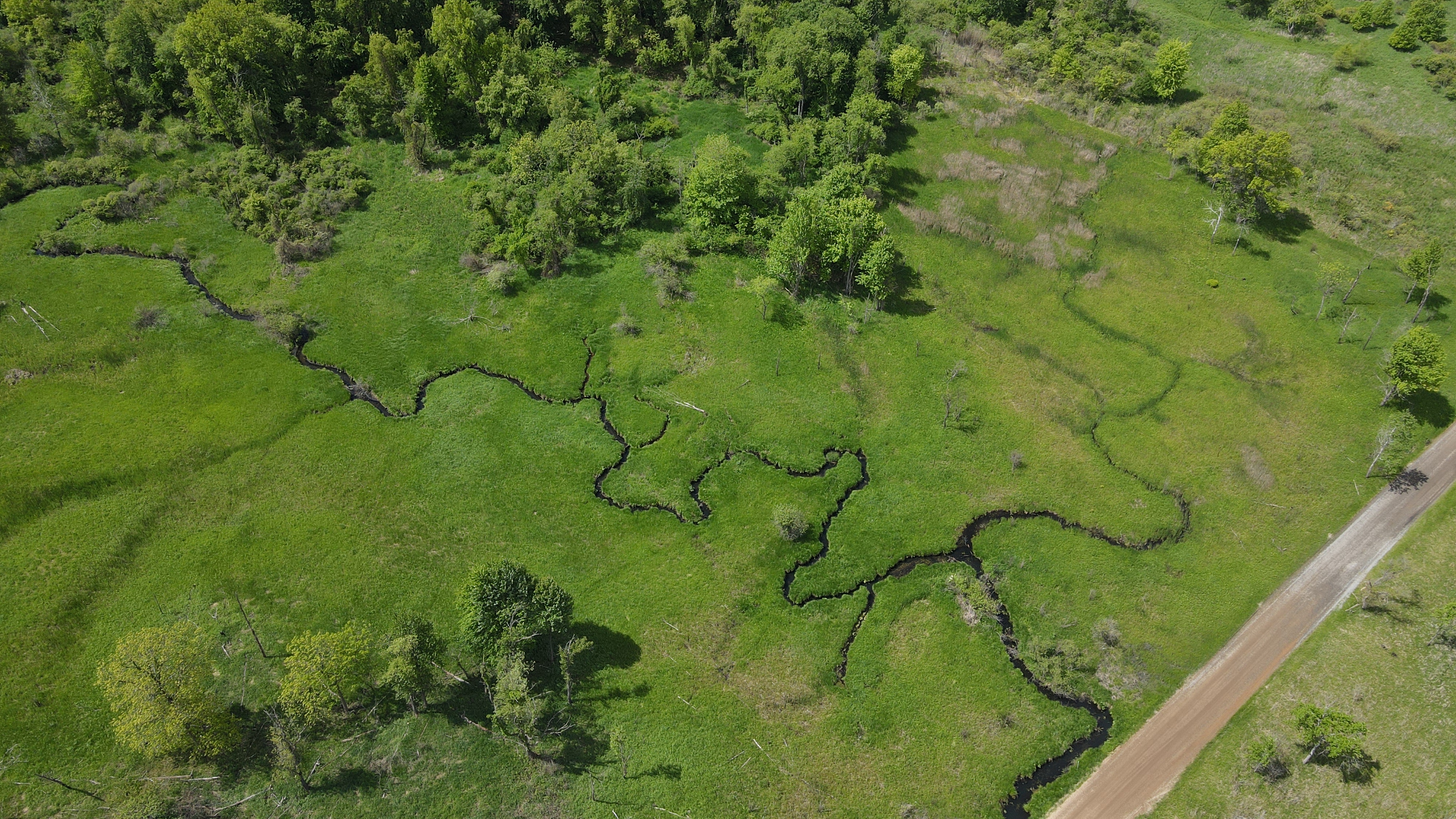
The Quiet Work of Protecting Dayton Wet Prairie
Posted on October 15, 2025
Down a quiet country road in Bertrand Township lies a place few have seen:
Dayton Wet Prairie Preserve.
Chikaming Open Lands acquired the 40-acre site from The Nature Conservancy in 2011. Split between two parcels on Curran Road, it is small but ecologically significant — a rare remnant of Michigan’s lost wetlands, shaped by mineral-rich groundwater, seasonal flooding, and fire. With nearly 50% of the state’s original wetlands gone, Dayton Wet Prairie endures.
Within these wetlands, uncommon species still survive — from Michigan lily and fringed gentian to the DeKay’s brown snake and sedge wren. Some are so sensitive, and unfortunately so coveted, that their names are not shared publicly. Their presence makes Dayton Wet Prairie both fragile and among the most important places COL protects.
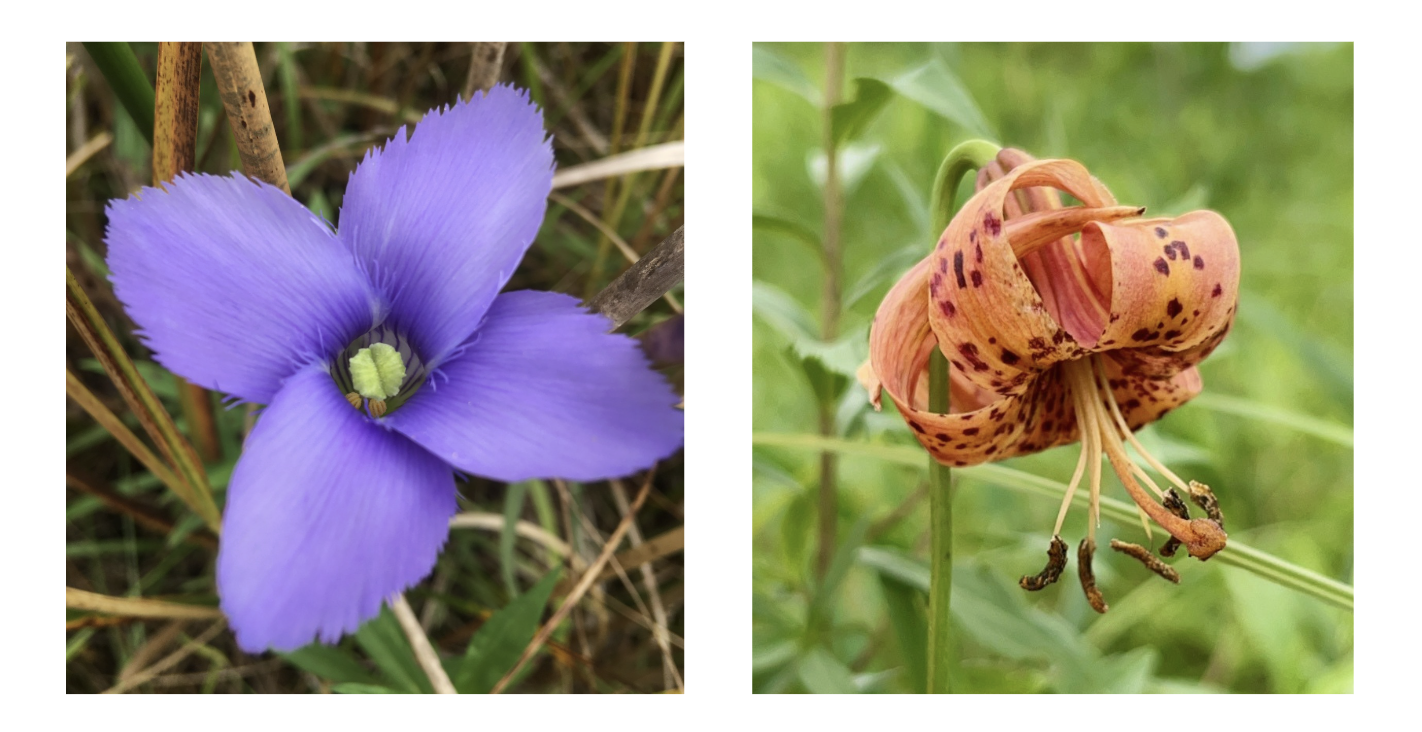
Pictured: Fringed fentian (left) and Michigan lily (right)
In an ecosystem as rare and delicate as Dayton Wet Prairie, stewardship demands both caution and commitment. The same water that sustains the fen also makes it difficult to manage. With no off-road vehicles allowed, most work is done on foot — or even by drone, as when reed canary grass was treated this year. Each visit is purposeful: monitoring seasonal changes, documenting wildlife, or addressing new challenges.
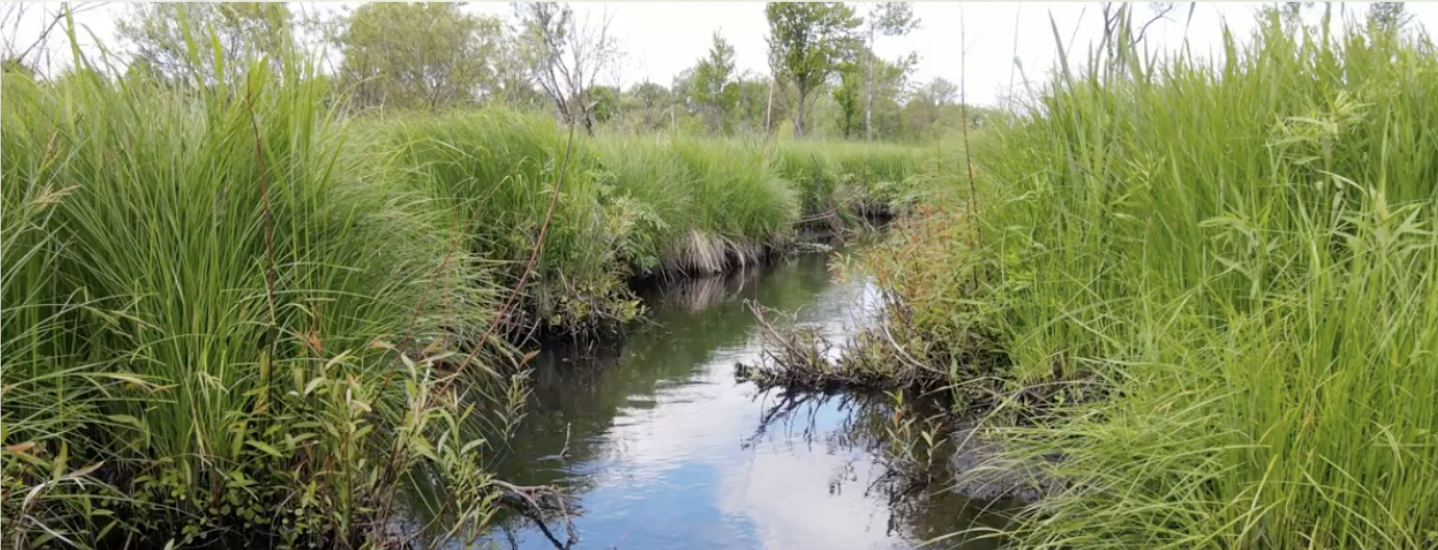
Pictured: McCoy Creek at Dayton Wet Prairie
Guided by the preserve management plan, first written in 2011 and updated in 2023, COL has steadily restored the prairie through invasive species control, habitat management, and long-term monitoring.
Tackling Invasives
Phragmites: Non-native stands are controlled with herbicide, cutting, and controlled burns to prevent small populations from spreading.
Shrubs: Buckthorn, multiflora rose, and encroaching native dogwoods and willows are cut back, while select shrubs remain along McCoy Creek to stabilize banks.
Thistle and Reed Canary Grass: Targeted spraying gives native grasses, like cordgrass, room to thrive.
Habitat Management
Controlled Burns: Controlled burns reduce woody growth, recycle nutrients, and encourage native plant growth.
Native Seed: Seed collected on-site and spread in restoration zones diversify and strengthen rare species, including native phragmites.
Wildlife
Butterflies: Annual butterfly surveys contribute to the Michigan Butterfly Network’s understanding of population trends.
Reptiles: Regular surveys have found multiple protected species, including at least one rare turtle and two rare snakes.
Birds: Breeding bird surveys with the Berrien Birding Club confirm Dayton Wet Prairie as a birding hotspot, with sightings from sandhill cranes, cedar waxwings, and warblers to bald and golden eagles. Species of special concern, such as the red-shouldered hawk and prothonotary warbler, have also been recorded.
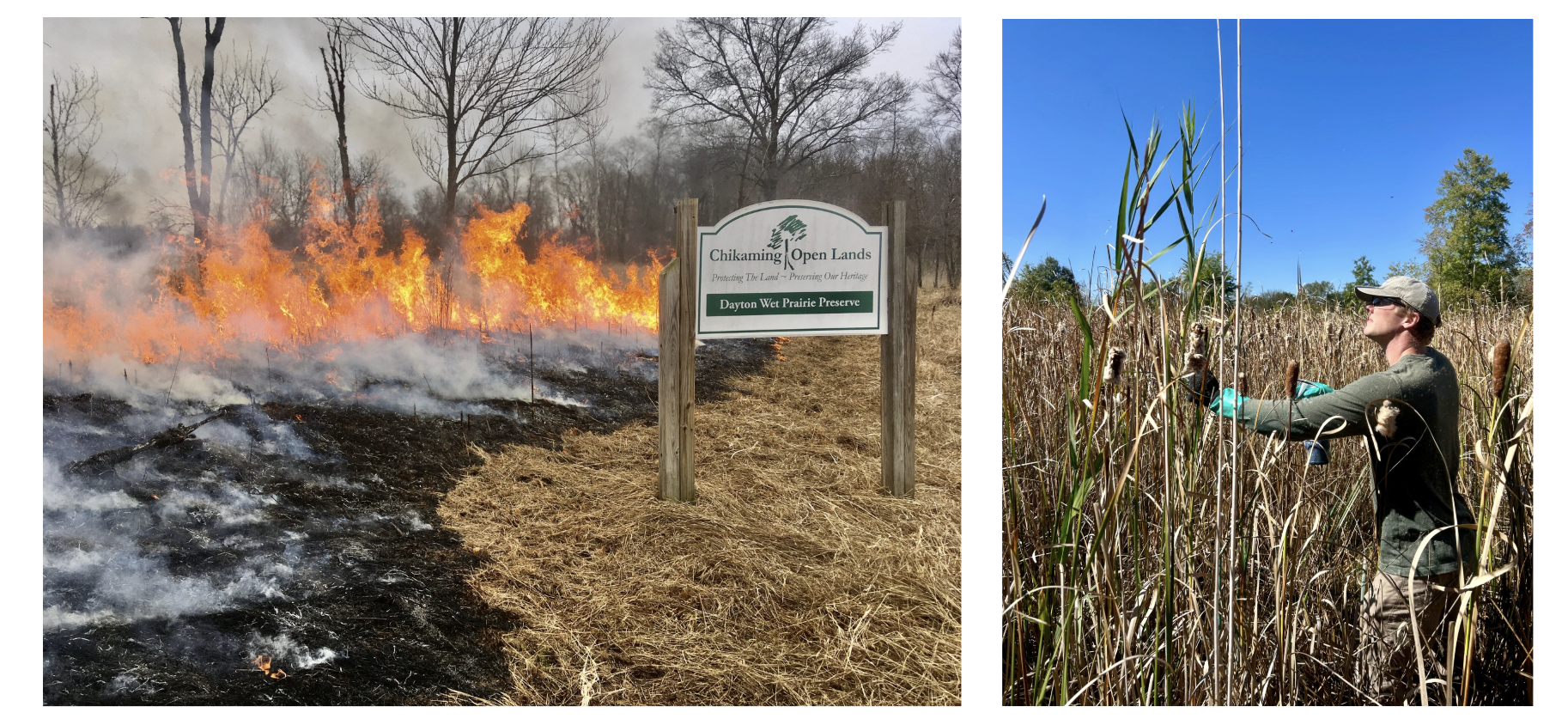
Pictured: controlled burn at Dayton Wet Prairie (left) and COL Conservation Specialist Alex Schrader hand-wicking invasive phragmites (right)
In addition to other management efforts, cleanups and new signage discourage dumping, while previously disturbed areas have been reseeded with native plants. Some results, such as cleared thickets, are immediate. Others are more subtle, like a cedar plank dam that slows water through an old ditch — restoring natural hydrology and helping the ecosystem flourish.
Most people will never visit Dayton Wet Prairie, but its protection benefits all. Its wetlands filter water into McCoy Creek and the St. Joseph River, shelter rare species, and safeguard a piece of Michigan’s pre-settlement landscape that cannot be replaced.
Stewardship here is muddy boots, patient monitoring, and deep respect for the land. This quiet but hopeful work allows rare plants to bloom and clean water to flow.
View the full newsletter here.
Some of the most important places we protect are the ones you may never see.





